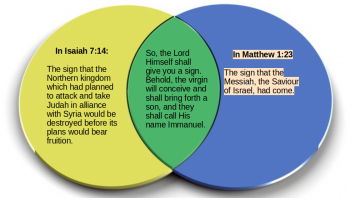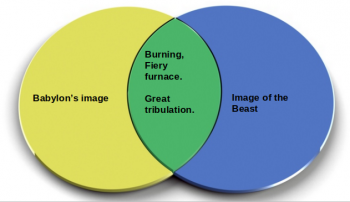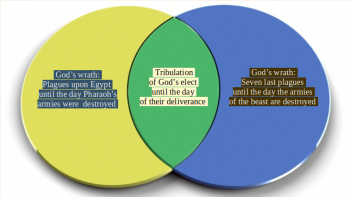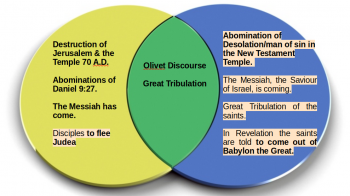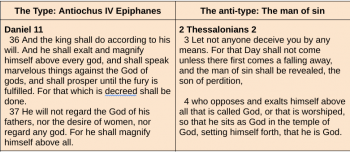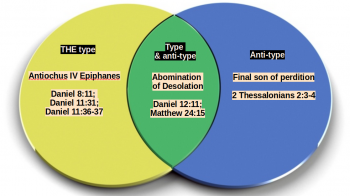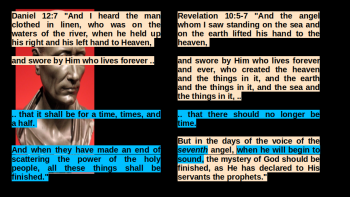For some reason Dispensationalists divide Jews from salvation offered to all ethnicities. And Reform Theology divides Israel from salvation offered to all nations. But does God really reject ethnicities and nations simply because not *all* in an ethnic group is saved, and not *all* in a national group is saved?
God established Division..between many things...including... between Hebrews/Tribes/Jews and Gentiles.
Jews one Race...further divide themselves individually one from another.
Gentiles one Race...further divide themselves individually one from another.
Salvation is Gift from God, Offered ALL natural born Living men.
How men Receive His Gift ... IS ALWAYS AFTER a bodily DEATH.
A man of Either race (Jew or Gentile) BECOME AS ONE SAME (race no longer a dividing factor), IF and WHEN they receive Gods Gift of Salvation.
I don't believe so. Would you throw out the idea of having a Christian family simply because one or two people in the family decide to not be Christians? No, you would separate out those who wish to be non-Christian and continue the family with the Christians that remain.
.
Calling oneself “a Christian”, is NOT the deciding factor of WHO receives Gods Gift of Salvation.
Calling oneself “a Christian”, “a Muslim”, “ a Buddhist”, whatever...and they be strangers or family members....it is individuals who DECIDE, to continue relationships or sever relationships, for religious purposes, or entirely.
The same is true with the Jewish ethnicity and nationality. Nations rise and fall. Israel fell, as all nations do.
Nations are simply boundary-ed lands, with express occupants within those land with citizenship and allegiance to that Nation, and foreigners without citizenship and allegiance to that Nation.
True enough....Nations are particularly in Jeopardy of “falling”, when the highest Servants of the Nation are Underhandedly Corrupt....and or the Nations is Occupied by a relatively LARGE number of Foreigners, rather than Citizens. (SADLY....Expressly the Jeopardy the US is currently Facing).
And so, when Israel fell, the Jewish ethnicity seemed to perish along with national Israel.
It didn’t fall, it became Scattered. Jews still identify as Jews, regardless if they Practice the Jewish Religion, or Any Religion.
But the Scriptures say that God does not give up on nations simply because many of them fail. They can be given a 2nd chance. And those who wish to no longer be part of God's covenant can be cut off and let go, rebuilding the people and the nation around the original faith.
Hebrews, Tribes, Jews, Israelites...whatever they are called have from Ancient Days been called BY God, His People. (Ie as God says...”My People”.)
The process Israel has gone through all Christian nations have gone through. But has God given up on Russians, Ukrainians, the English, the French, the Spanish, the German, the America, the Australian, the New Zealander, the Canadian, etc. etc.? No, by no means!
God has Not given up on ISRAEL. Once Jesus established His Church, being Taught by Jews, TO Jews and Gentiles, AND Gentiles “took over Christ’s Church”, the Jews relented, and returned to their OLD Laws, OLD Religion. IMO, that was the turning Point, that God BLINDED the Jews, to make the Jews Jealous of the Gentiles Assuming “the Jews God” and the “Jews Messiah”.
God IS ANGRY! Angry the Jews relented. Angry at what Gentiles in many Churches are Calling “His Word”, when it is NOT. Angry at HOW MUCH influence Satan has over men. Angry at Men in Power positions WHO are Wicked, Lying, Corrupt. Angry at Men who follow along Doing as Evil does, Doing as Wicked does...MAKING “them” the People’s “Master”.
(Our own “founding fathers” Understood this, and WHY the Federal Government was designed to be VERY small, VERY limited, and taking turns as SERVANTS, (NOT GLUED to Seats FOR YEARS, daily in your face Dictating “Masters”) to oversee a VERY limited few things, protecting the Peoples RIGHTS (NOT raping the People of their Right to be Free and Independent to take care of themselves or go without.)
There is no "7 years tribulation" in my view. The Great Tribulation Jesus spoke of is the Jewish Punishment of the present age. When it ends God will regather Israel into a Christian nation. And many Christian nations will be restored, as well. That's how I perceive God's promises to Abraham.
God IS Angry, and so ARE numerous People who Look at the Corrupt state of the World, 24-7 Promoted, Instigated, as Acceptable.
** There WAS a beginning, Created and Established BY Gods WILL and I believe there SHALL BE an ENDING as God Has Foretold.
** Gentiles primarily (rather than Jews) for the last 2,000 years have been ACCEPTING Gods Offering of “ASSURED” Salvation “NOW”, By, Through, Of,
Conversion; By, Through, Of Jesus, the Word of God and Of Christ, the Power of God. Gods Offered AND a mans ACCEPTANCE of
Conversion, (according to Gods WAY), IS EXPRESSLY a man; DOING THE WILL OF GOD.
** There IS a foretold 7 yr period of Gods Wrath He shall send down from Heaven. What He sends down, IS expressly to “punish”, ie negatively Affect the inhabitants upon the face of the Earth....FOR NOT doing the WILL of God...As IN Noah’s day, SOME shall be Lifted UP off the face of the Earth, (which shall apply to the Converted), A FEW (of Gods People...not Gentiles) have an express SEAL of God, AND a mission to Accomplish DURING the Tribulation.
Gods Tribulation, IS Primarily punishment, and Especially Rescue of Gods Faithful People, ISRAEL.
** IF you are CONVERTED, you are NOT subject to experience WRATH, and there is plenty of Wrath to go around during the 7 yr Tribulation.
Wrath of the Lamb, the Devils Wrath, Gods Wrath, Gods Vengeance...,
So horrific, men will wish to die, try to die....but Can NOT.
** IF you are NOT CONVERTED, and still living, WHEN God decides to begin His Tribulation, you will get to experience some or all of the Tribulation.


